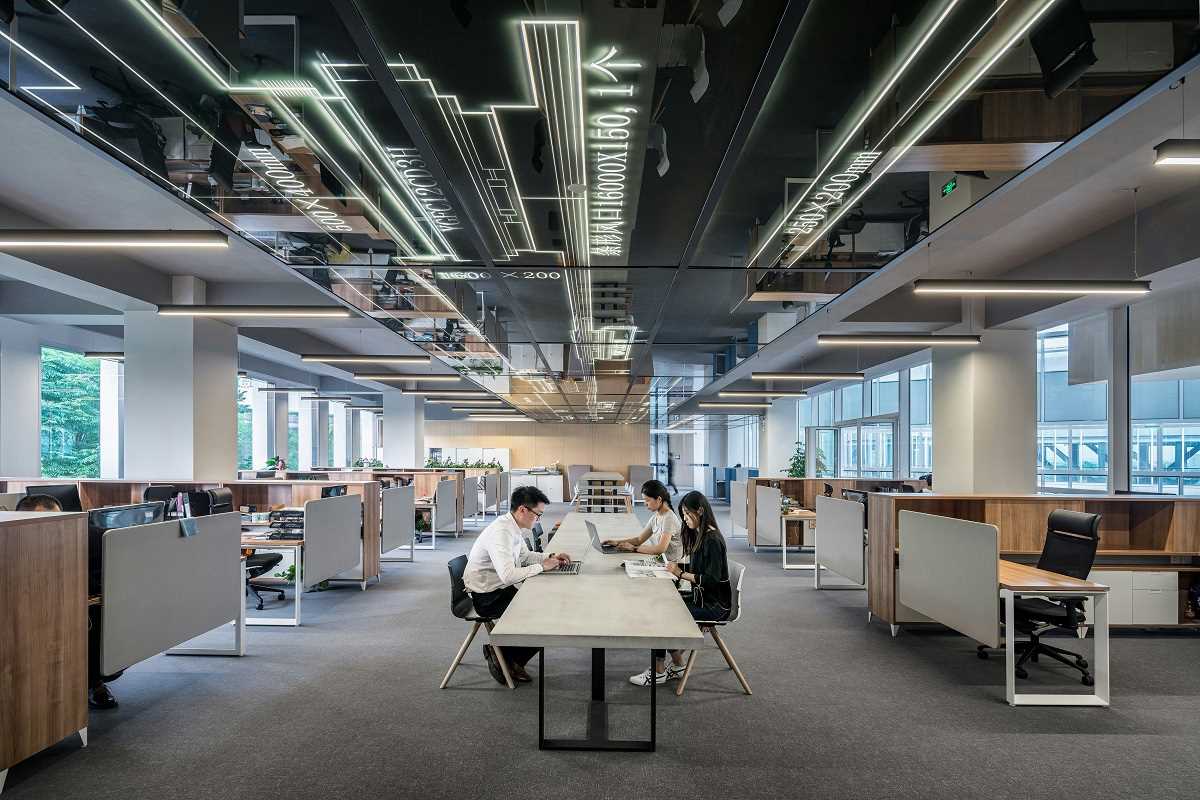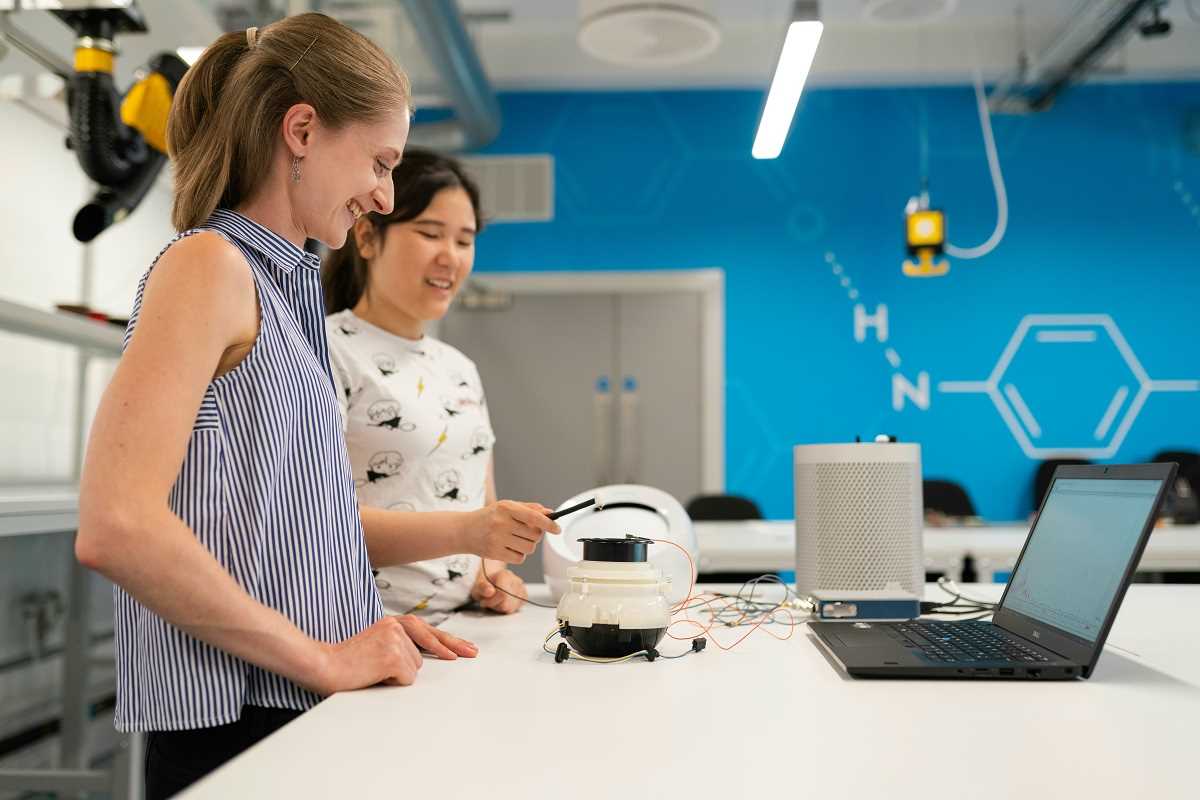Lighting is often one of the most overlooked aspects of workplace design, yet its impact on employee performance and well-being is profound. One of the key factors in lighting design is color temperature, a measure of how "warm" or "cool" a light source appears, expressed in Kelvin (K). The right color temperature can influence mood, focus, and efficiency, while the wrong lighting can overstimulate or drain energy, reducing productivity. By understanding the science behind color temperature and its effects, businesses can create environments that promote both productivity and employee satisfaction.
Understanding Color Temperature
Color temperature is categorized into three main ranges:
- Warm Lighting (2700K–3000K): This light has a cozy, yellowish tint similar to traditional incandescent bulbs or candlelight.
- Neutral Lighting (3500K–4500K): Slightly cooler, this light resembles mid-morning sunlight, often used in modern office spaces.
- Cool Lighting (5000K–6500K): This is bright, bluish light akin to daylight on a clear afternoon. It mimics the natural light during peak daylight hours.
Each of these temperature ranges affects humans differently because of our biological responsiveness to light, particularly how it interacts with our circadian rhythms.
The Science of Light and Productivity
The human body is naturally attuned to cycles of light and darkness, thanks to circadian rhythms. These internal clocks regulate sleep and wake cycles, hormone release, and energy levels. Light—particularly its color temperature and intensity—plays a crucial role in these processes.
How Cool Lighting Enhances Wakefulness
Cool lighting works to synchronize our circadian rhythms by mimicking natural daylight at its brightest and bluest. Exposure to cool light suppresses melatonin, a hormone that makes us feel drowsy, while promoting the release of cortisol, which helps us stay alert and focused. This makes cool lighting ideal for tasks requiring sustained concentration, such as computer work, problem-solving, or brainstorming sessions.
Numerous studies support the association between cooler color temperatures and enhanced cognitive performance. Research from the Lighting Research Center found that office workers exposed to blue-enriched light reported improved alertness, mood, and performance, particularly in the morning when the body naturally craves bright, cooler light.
Warm Lighting and Relaxation
Warm lighting creates a sense of calm and comfort, often associated with relaxation. While it’s less effective for stimulating cognitive performance, warm lighting has its place in the workplace—namely in areas meant for breaks or casual meetings. Environments with warm lighting help employees relax, recharge, and reduce stress. Think of lounges or cafeterias, where the inviting glow puts employees at ease.
Neutral Lighting for Balance
Neutral lighting is a versatile middle ground. It doesn’t overstimulate or overly relax, making it suitable for general office tasks that don’t require sharp focus or complete calm. Across work environments, neutral lighting is a popular choice because it offers a natural balance between functionality and comfort.
Light Timing and Circadian Support
While workplace lighting is important throughout the day, timing matters. Employees exposed to cooler light in the morning generally feel more energized and perform better on tasks requiring focus. By afternoon, however, overly cool and bright lighting can overstimulate, contributing to fatigue or irritability.
To address this, businesses can use dynamic lighting solutions that shift color temperatures throughout the day in line with circadian rhythms, starting with cooler tones in the morning and transitioning to warmer hues in the late afternoon. This imitates the natural progression of daylight and reinforces the body’s biological cycles.
Enhancing Workplace Productivity with Optimized Lighting
To truly understand the impact of lighting design, consider how various businesses are implementing solutions aimed at boosting productivity and employee well-being.
The Modern Office
Tech giants like Google and Apple have embraced dynamic lighting to improve workplace productivity. Their offices integrate adjustable LED systems that automatically change color temperature throughout the day. Early hours see crisp, cool white light to energize creativity, while warmer tones signal the winding down of the day, helping employees transition to a relaxed state. These systems are not only energy-efficient but also scientifically grounded in promoting alertness during working hours and supporting circadian health.
Healthcare Environments
Hospitals and clinics offer another excellent example of how lighting affects productivity and emotions. Healthcare staff experience high stress and long hours under artificial lighting that can feel sterile and fatiguing. By using LED systems with cooler daytime light and warmer evening tones, hospitals have been able to improve staff alertness during shifts and promote relaxation in patient areas—helping patients sleep better and recover faster.
Retail and Collaborative Spaces
Even retail environments benefit from understanding color temperature. A chic clothing boutique, for example, might use warm lighting near lounging or checkout areas while employing neutral or cool lighting in dressing rooms to avoid shadowing and help customers feel more confident about trying on outfits. Similarly, co-working spaces are utilizing daylight-mimicking light systems to boost focus during collaborative brainstorming meetings without creating the harshness of industrial fluorescents.
Practical Tips for Businesses
Many organizations looking to adapt their lighting designs can benefit from the following strategies:
- Use Task-Oriented Lighting
Different areas of the workplace have different lighting needs. Work desks and computer stations should use neutral-to-cool lighting to maintain focus, while breakout spaces, meeting rooms, or lounges benefit from warmer tones for relaxation and conversation.
- Adopt Dynamic Lighting Systems
With advances in LED technology, businesses can install dynamic lighting systems that shift color temperature based on time of day, activity type, or even individual preferences. Systems like Philips Hue or Lutron’s smart lighting solutions offer the flexibility to fine-tune lighting to meet diverse needs.
- Maximize Natural Light
Whenever possible, integrate natural light into the workplace. Large windows, skylights, and open floor designs allow sunlight to guide employees’ circadian rhythms naturally. Position workstations near windows when feasible, and use window treatments that reduce harsh glare while allowing daylight in.
- Supplement with Artificial Solutions
For spaces without sufficient natural light, choose high-quality LED lighting that mimics daylight. LEDs consume less energy, have tunable color temperature options, and are designed to emit even brightness across spaces.
- Encourage Employee Input
Lighting preference can vary from person to person. Some employees may prefer brighter, cooler light, while others might thrive under softer illumination. Offering adjustable desk lamps or individual lighting controls can boost comfort and satisfaction.
- Blend Aesthetics with Function
Workplace lighting impacts not only mood and productivity but also the overall ambiance of the office. Incorporate design elements that balance aesthetic appeal with functionality. Pendant lights, recessed fixtures, and LED panel designs can modernize interiors and complement the workplace’s visual theme while delivering appropriate illumination.
- Measure Success with Feedback
To evaluate whether the lighting changes have succeeded, solicit feedback from employees. Are they feeling more productive? Do certain light levels or tones make them feel uncomfortable or fatigued? Gathering insights like these allows for fine-tuning lighting systems to meet your team’s specific needs.
Investing in superior workplace lighting design isn’t merely about aesthetics or employee retention—it’s about boosting the bottom line. Studies show that properly illuminated environments increase productivity by 20% or more while reducing absenteeism and stress. Proper lighting also supports long-term health, mitigating the effects of eyestrain, headaches, and poor sleep patterns.
 (Image via
(Image via


.jpg)


